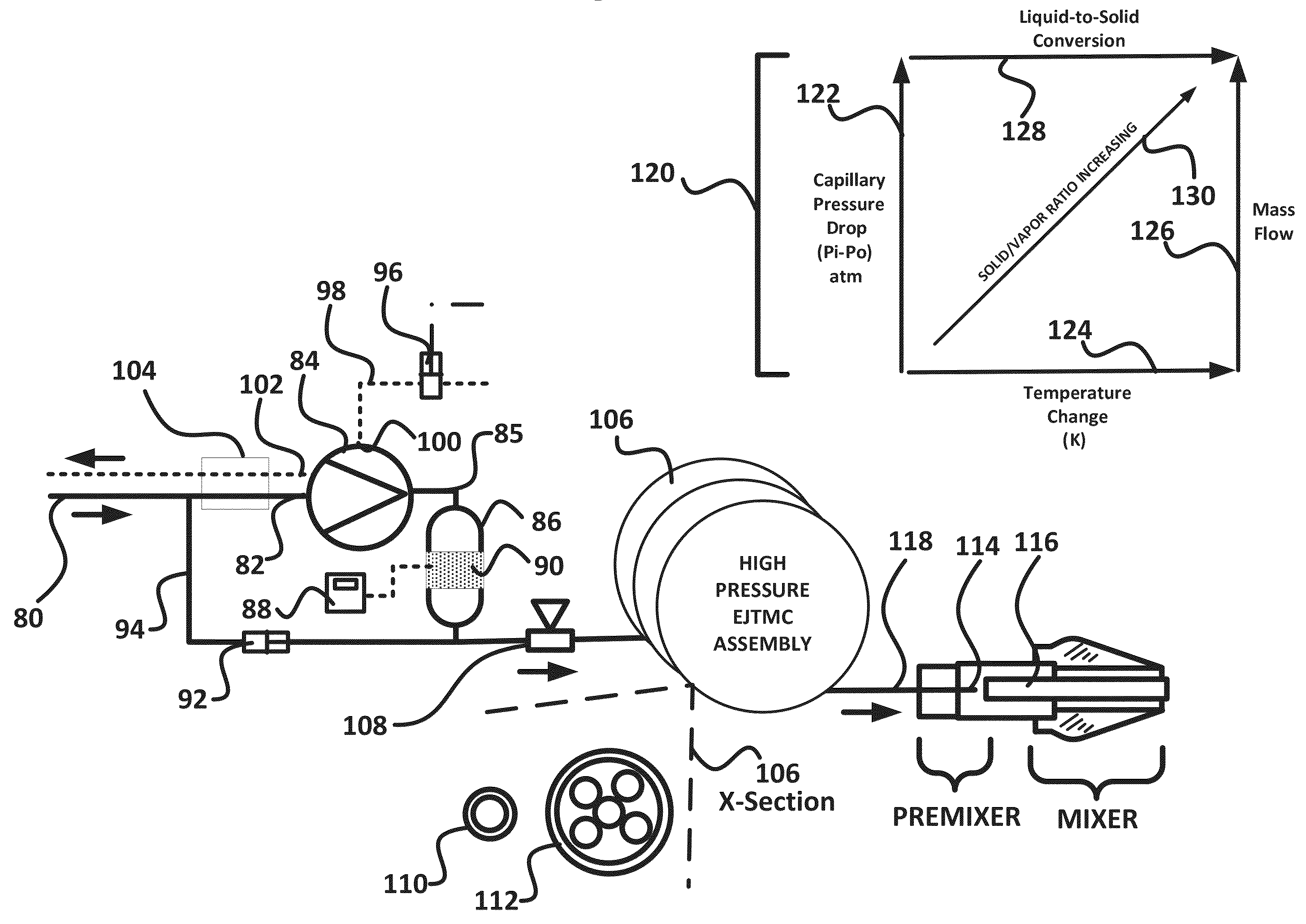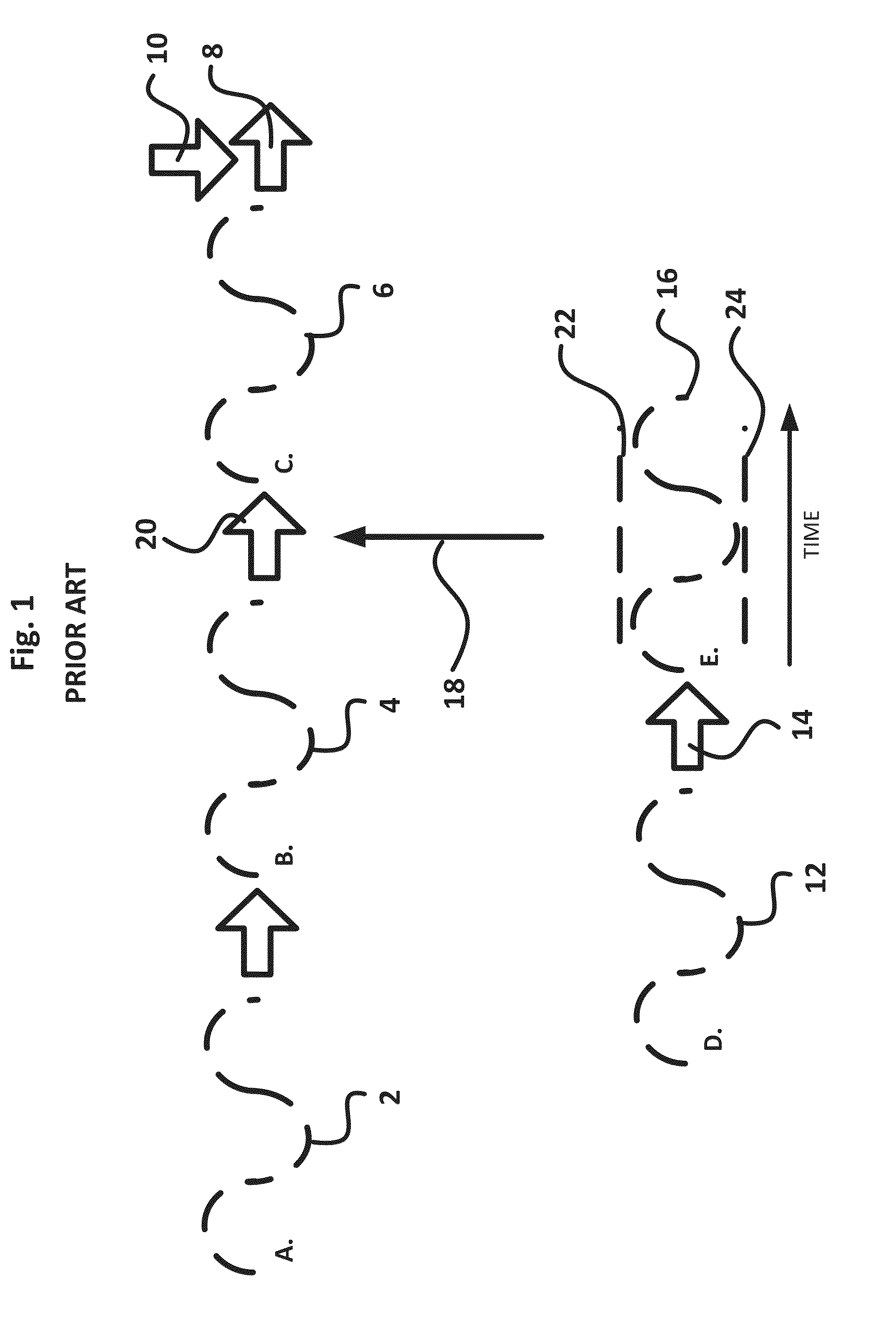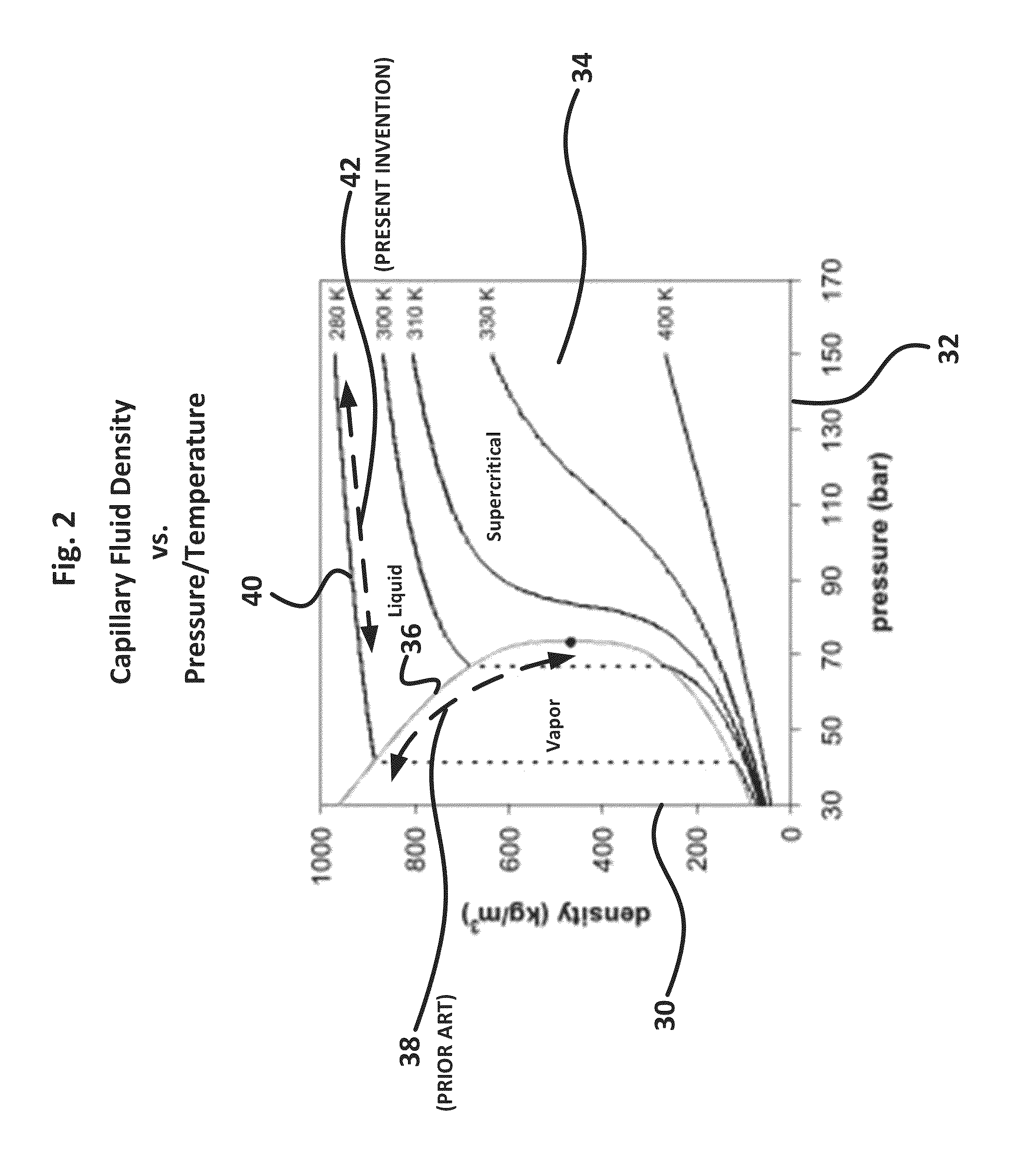CO2 composite spray method and apparatus
a composite spray and carbon dioxide technology, applied in the field of carbon dioxide (co2) solidgas composite sprays, can solve the problems of high cost, inability to clean impure carbon dioxide, and inability to obtain pristine surfaces clean,
- Summary
- Abstract
- Description
- Claims
- Application Information
AI Technical Summary
Benefits of technology
Problems solved by technology
Method used
Image
Examples
experimental 1
[0101]Having thus described the preferred and exemplary embodiments of the present invention, the following discussion by reference to FIGS. 9A, 9B, 9C, 9D, 9E and 9F details experimental testing, results, and analysis comparing and contrasting the performance characteristics between the present invention with the prior art—specifically prior-art and first-generation spray cleaning system described and operated under U.S. Pat. No. 5,725,154 (U.S. Pat. No. '154) and prior-art and second-generation spray cleaning system described and operated under U.S. Pat. No. 7,451,941 (U.S. Pat. No. '941) spray system scheme modified with a stepped capillary system described under U.S. Pat. No. 7,293,570 (U.S. Pat. No. '570). All CO2 composite spray cleaning systems tested under operated under equivalent dense fluid propellant gas pressure and temperature conditions.
Test Apparatus and Conditions for the Present Invention:
[0102]A commercial CO2 composite spray system called the PowerSno™ CO2 compos...
experimental 2
[0118]An experiment was performed to determine the relationship between spray mixing temperature of a CO2 Composite Spray with the variation in micro-capillary pressure of within the EJTMC assembly.
Spray Power Test Apparatus and Method:
[0119]The present invention was tested to determine the changes in composite spray mixing temperature for an exemplary high pressure micro-capillary while maintaining a fixed mixing propellant gas (clean dry air) pressure, flow rate and temperature. The test apparatus for the present experiment comprised a prior-art PowerSno™ Model PS6000 CO2 spray system modified with the apparatus of FIG. 4A and FIG. 4B. The mixing spray nozzle of FIG. 4B was positioned 0.25 inches from a K-Type thermocouple connected to a digital thermometer —Omega Model CL23A, Omega Engineering. The EJTMC high-pressure condenser of FIG. 4A (106) comprised a 12 inch long micro-capillary having an internal diameter of 0.008 inches positioned coaxially (and adjustably) within the spr...
PUM
| Property | Measurement | Unit |
|---|---|---|
| density | aaaaa | aaaaa |
| inner diameter | aaaaa | aaaaa |
| inner diameter | aaaaa | aaaaa |
Abstract
Description
Claims
Application Information
 Login to View More
Login to View More - R&D
- Intellectual Property
- Life Sciences
- Materials
- Tech Scout
- Unparalleled Data Quality
- Higher Quality Content
- 60% Fewer Hallucinations
Browse by: Latest US Patents, China's latest patents, Technical Efficacy Thesaurus, Application Domain, Technology Topic, Popular Technical Reports.
© 2025 PatSnap. All rights reserved.Legal|Privacy policy|Modern Slavery Act Transparency Statement|Sitemap|About US| Contact US: help@patsnap.com



